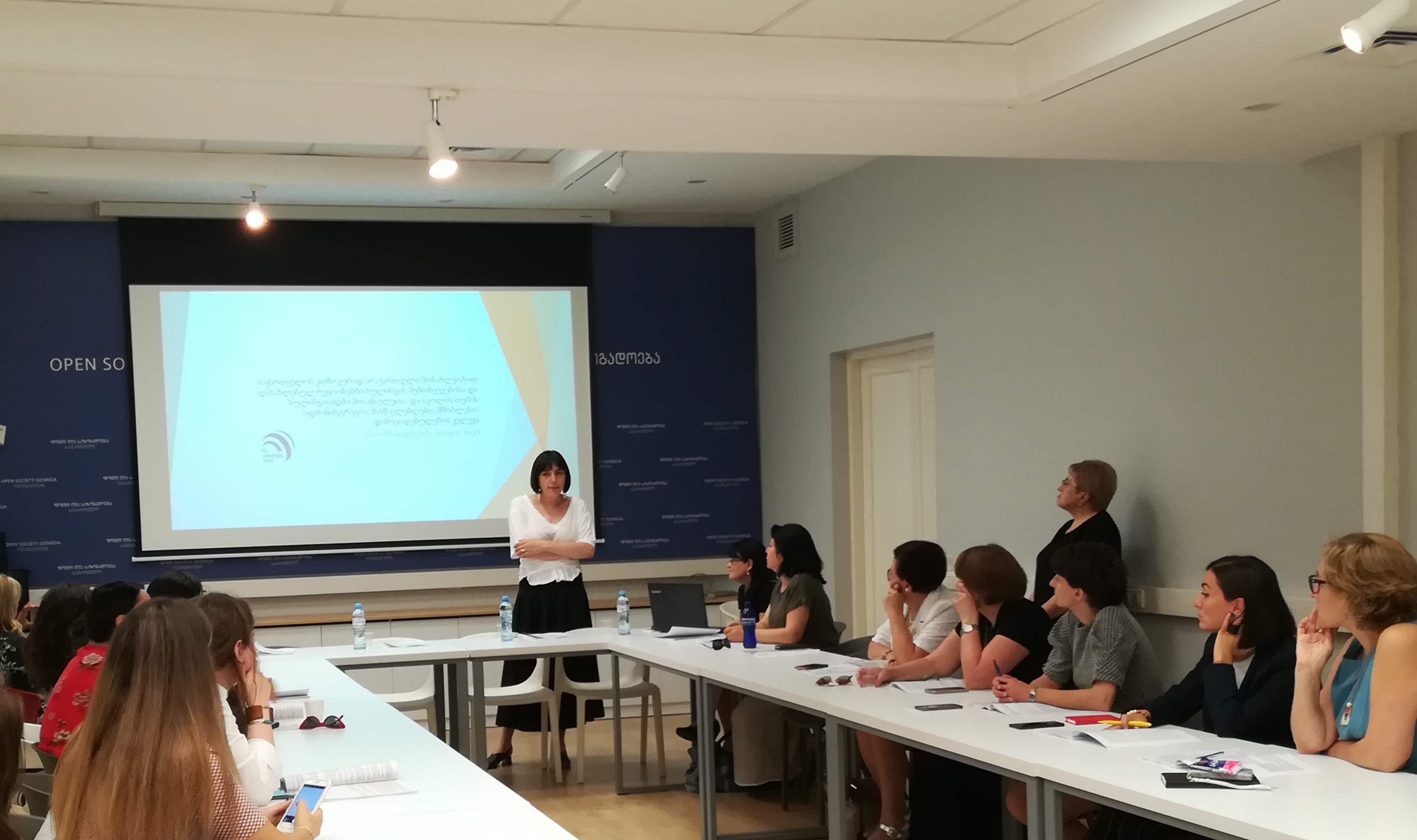
On July 3, Open Society Georgia Foundation (OSGF) hosted a presentation of the report “Problem of Bullying in Diverse School Environment.”
The project “Problem of Bullying in Diverse School Environment” was implemented by Women’s Rights Community Initiative with the financial support of OSGF’s National Integration Program and in partnership with Applied Research Company (ARC).
Khatuna Ioseliani, OSGF National Integration Program Manager made her opening remarks during the presentation. Lili Safarova, head of Women’s Rights Community Initiative, and Khatuna Nachkebia, founder of ARC, presented their papers.
The research conducted within the framework of the project has studied the types of bullying among pupils in the regions of Georgia populated by non-Georgian ethnic groups, especially in those schools, where ethnically Georgian and non-Georgian pupils are studying together. Attitudes of pupils and the school community (administration, teachers, parents) towards the problem of bullying have been determined.
Both quantitative and qualitative research methods were used during the work.
Structured questionnaires containing open-ended and closed-ended questions were used as a quantitative research tool. Questionnaires were self-administered and questionnaire methodology was used as the survey method.
Focus group discussion methodology was selected as the method of qualitative research and focus group guide was used as the research tool.
The quantitative survey was conducted with 8th-12th graders (target group) from 19 public schools of Tbilisi, Adjara, Kvemo Kartli, Samtskhe-Javakheti, and Kakheti. Two focus group meetings were held in each target region, one with the participation of parents and the other – with school administration. A total of 13 focus group meetings were held.
Key findings of the research:
- Although the majority has heard about the term of bullying, awareness about bullying is low in schools of both Tbilisi and regions.
- Pupils and teachers do not perceive a part of behaviors as bullying.
- The majority of pupils identify the behaviors typical for bullying; however, a significant part of pupils does not think that mocking on religious and ethnic grounds represents bullying.
- Most frequently, bullying incidents take place by reason of appearance, clothes, and behavior/conduct/signs typical for an opposite gender, and rarely by reason of gender.
- The majority of pupils are reluctant to give direct answers to the questions about bullying; however, answers to indirect questions show that the majority of pupils have witnessed the instances of bullying in their school.
- The majority of pupils who had been subject to bullying never tell anyone about it.
- As a whole, non-Georgian pupils were subject to more types of behavior typical for bullying than ethnic Georgians.
- Ethnically non-Georgian pupils apply to others for help when witnessing bullying incidents to a lesser extent than Georgian pupils.
- The reasons for pupils’ inaction when witnessing the cases of bullying are different among Georgian and ethnically non-Georgian pupils. Ethnically non-Georgian pupils are more unaware than their Georgian peers about what to do when witnessing the cases of bullying.
- Boys apply to others for help when witnessing bullying incidents more rarely than girls. The reasons for pupils’ inaction when witnessing bullying incidents differ by gender. Girls are more unaware than boys about what to do when witnessing the cases of bullying and think more that their actions will have no results. Boys think more frequently than girls that it does not concern them.

Representatives of the Ministry of Education, Science, Culture and Sport of Georgia, school resource officer’s service, schools, Public Defender’s Office, civil society organizations, as well as field experts and other interested persons attended the presentation.
Following the presentation, the researchers answered the questions that were followed by a discussion.
